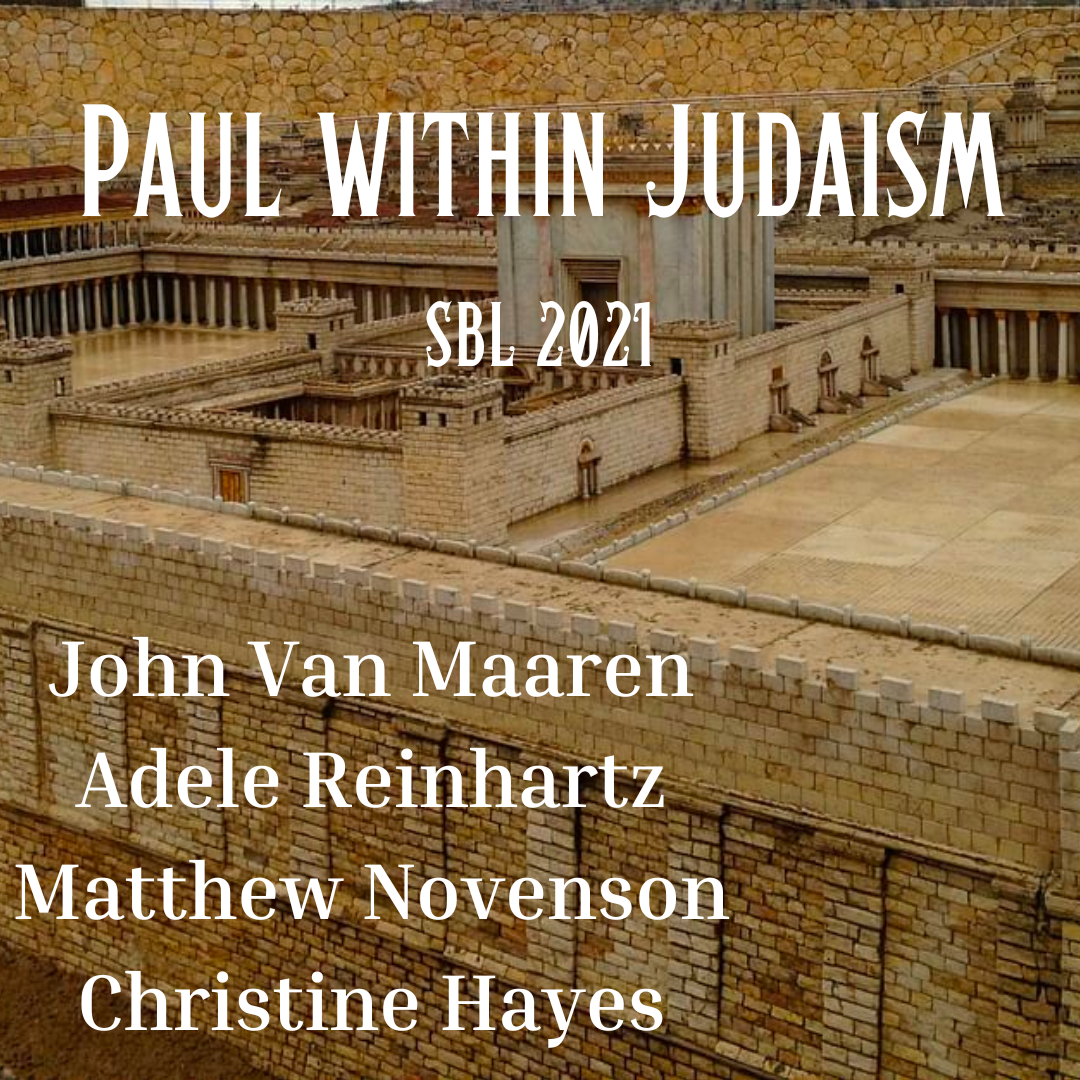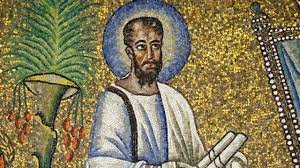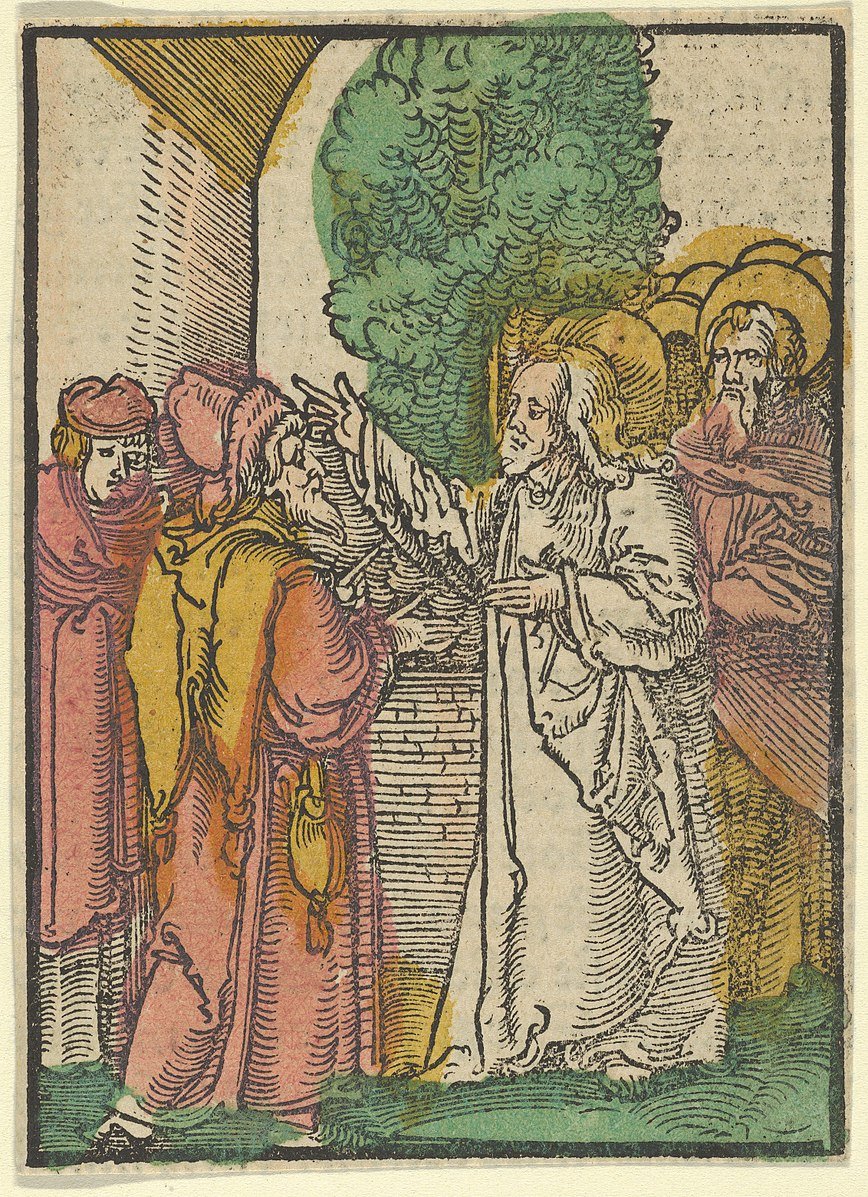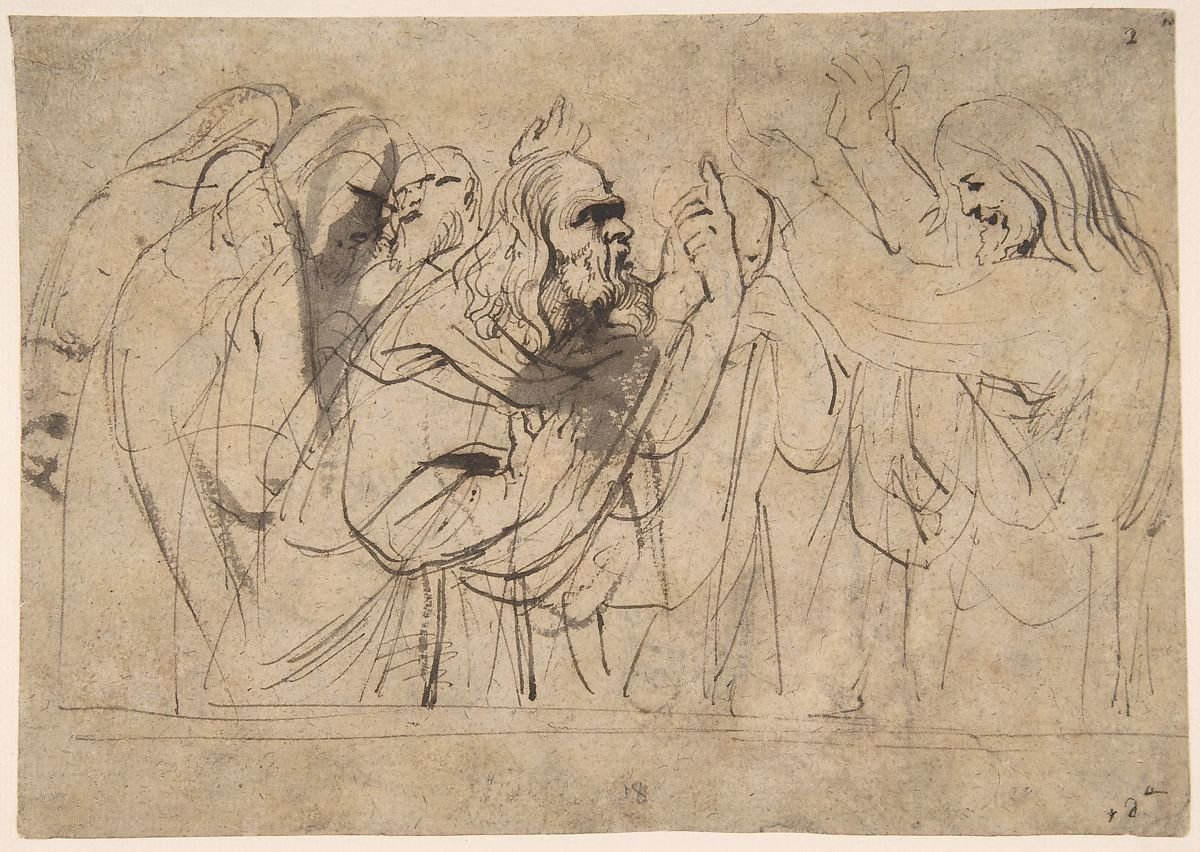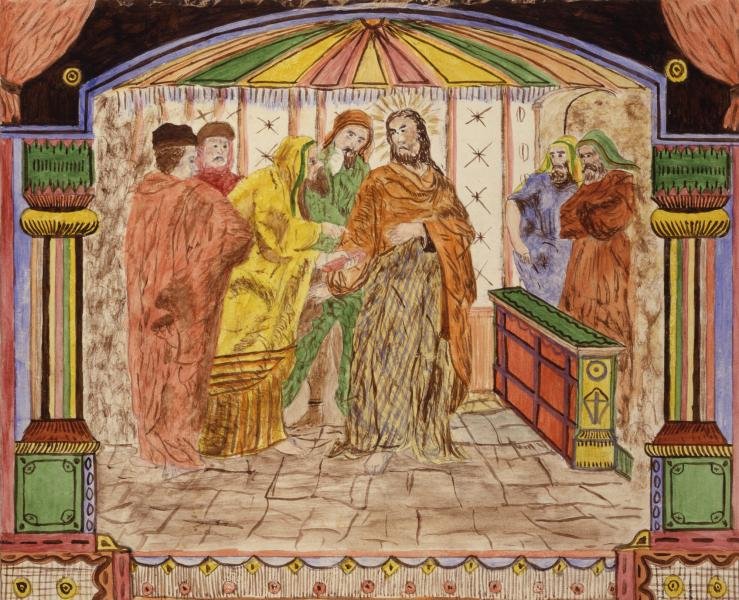“I believe that such comments are intended to be inclusive of Jews while solving a dilemma for Christians: this approach allows them to uphold the sacred nature of their scriptures without at the same time adopting a hostile stance towards Jews and Judaism. Yet I wish I could help some of my colleagues understand that despite their good intentions, such statements are both supersessionist and anti-Jewish.”
Read MoreSBL 2021 Panel I Matthew V. Novenson on Paul Within Judaism
“Every such study has to conclude with a claim about how, exactly, Paul differs from Judaism; the form of the conclusion is required by the set-up. But any claim of this form, no matter how well-researched or perceptive, is predicated on a gross generalization about (whatever the writer in question includes under the heading) “Judaism.” Comparisons of this type cannot do otherwise than find Paul to be unique or anomalous; they are purpose-built to find that.”
Read MoreSBL 2021 Panel I Paul Within Judaism
AJR is happy to host the Society of Biblical Literature’s panel discussion on what “Paul Within Judaism” means. The panel, organized by SBL’s “Paul Within Judaism” Unit, met virtually at the 2021 annual meeting.
Read MoreSBL 2021 Panel I John Van Maaren on Paul Within Judaism
“Sociologists and anthropologists agree that identity, whether ethnic, religious, or national cannot be determined by a list of shared or defining characteristics exhibited by all group members. Rather, identity is primarily a matter of ascription—that is, a person is Jewish, Greek, Roman, or Syrian first and foremost because they think and claim they are.”
Read MoreEditio Princeps: The 1523 Venice Edition of the Palestinian Talmud and the Beginning of Hebrew Printing
Yakov Mayer provides a glimpse at his newest book and work on the Palestinian Talmud’s manuscript tradition.
Read MoreEstablishing and Facilitating a Dissertation Seminar
“I tell students that writing is an inherently collaborative enterprise: we write in conversation with previous scholarship; we write for a future audience; we share drafts with colleagues and mentors; we submit work for peer review and to editors and editorial boards; we anticipate reviews of our books; we hope that our work will be engaged.”
Read More“Tinder Theology Project”: Biblical Dating Profiles
No two students created the same profile—even though many of them selected the same character—and this, too, was instructive. At its core, this assignment was about practicing interpretation.
Read MoreIt’s Magic! (Or is it?): Two Classroom Activities
Elena Dugan shares activities for both Hebrew Bible and New Testament classes that examines the distinction between magic and miracle.
Read MoreCreating a Commentary
Page of Rashi’s Commentary on the Megillot, courtesy of Wikimedia Commons
Page of Rashi’s Commentary on the Megillot, courtesy of Wikimedia Commons
With a “flipped classroom” format, this graduate seminar enabled students to create a commentary on key psalms with a focus on the history of Israelite religion.
Read MoreTeaching Textual Criticism through Manuscript Creation
“This lesson plan has been an effective means of reinforcing the physical, manuscript-based analysis of textual criticism, over against the theoretical texts of source criticism.”
Read MoreAncient Jewish Liturgy
What is an Ancient Jewish Liturgy?
“[A] liturgy ought not to be reduced to some type of verbal worship or praying activity directed toward the divine.”
Read MoreWere Early Rabbinic Prayers Scripted?
“Are we correct to presume that early rabbinic liturgy had a textual tradition coherent with the models we know, including from their predecessors at Qumran? Did early rabbis have a system of memorized, orally transmitted yet fixed texts, or did their worship operate in a more free-form system?”
Read MoreThe Ritualization of Psalms in the Dead Sea Scroll 1QHodayotᵃ (Thanksgiving Psalms from Qumran)
“One of the chief hurdles in the consideration of the psalms found in 1QHᵃ as compositions that may have been read aloud in communal settings is the use of the term “liturgical” to characterize such settings and texts.”
Read MoreJonah and Prayer
“Prophecy and prayer, performance, composition of scriptures and their interpretation were all intertwined in vital and vibrant ways... The two prayers in Jonah offer illustrations of two of the many patterns of how prayer might intersect with scriptural tradition.”
Read MoreDissertation Spotlight | Marshall Cunningham
I argue that the construction of Judeanness — like all collective identities — was a complex, contextual, and continuous process of identity formation that was undertaken, consciously or unconsciously, by individuals and communities throughout the Babylonian and Persian empires.
Read MorePharisees and Evangelical Preaching
Jesus and Nicodemus by Crijn Hendricksz, 1616–1645
Jesus and Nicodemus by Crijn Hendricksz, 1616–1645
“Evangelical Christian faith and Jewish faith, with all their nuances and varieties, have every right to dialogue, debate, and disagreement, but when criticism of the Pharisees crosses the line into maligning persons with whom we differ we need to raise a flag of denunciation.”
Read MorePharisees Part Two: Reception History
Parable of the Pharisees and the Tax-Collector, from Das Plenarium, print, Hans Schäufelein (MET, 61.663.364)
Parable of the Pharisees and the Tax-Collector, from Das Plenarium, print, Hans Schäufelein (MET, 61.663.364)
“My comments intend to address primarily those who have not yet read the book, to provide a brief taste of my assigned chapters, and to reflect on the significance of this work for Jewish-Christian relations, especially in terms of community engagement and education.”
Read MoreWho Needs the Pharisees? New Testament and Beyond
“Christ and a Pharisee,” early 17th century by Anthony van Dyck at the Met.
“Christ and a Pharisee,” early 17th century by Anthony van Dyck at the Met.
“Who needs the Pharisees?” – it seems that, on the whole, we today, both Jews and Christians, need them more than anyone has ever done before, but for very different reasons. And we need them in academic historical, non-polemical form.
Read MorePharisees Part One: Historical Reconstruction
“Christ and the Pharisees” by Lawrence W. Ladd ca. 1880. Smithsonian American Art Museum
“Christ and the Pharisees” by Lawrence W. Ladd ca. 1880. Smithsonian American Art Museum
“This literary image of Pharisees has been conflated with Jews generally and been attributed to real people in the here and now of all centuries over and over again. The narratives have been read historically, as accurately real life people – with all the horrific consequences emanating from this equation.”
Read More

